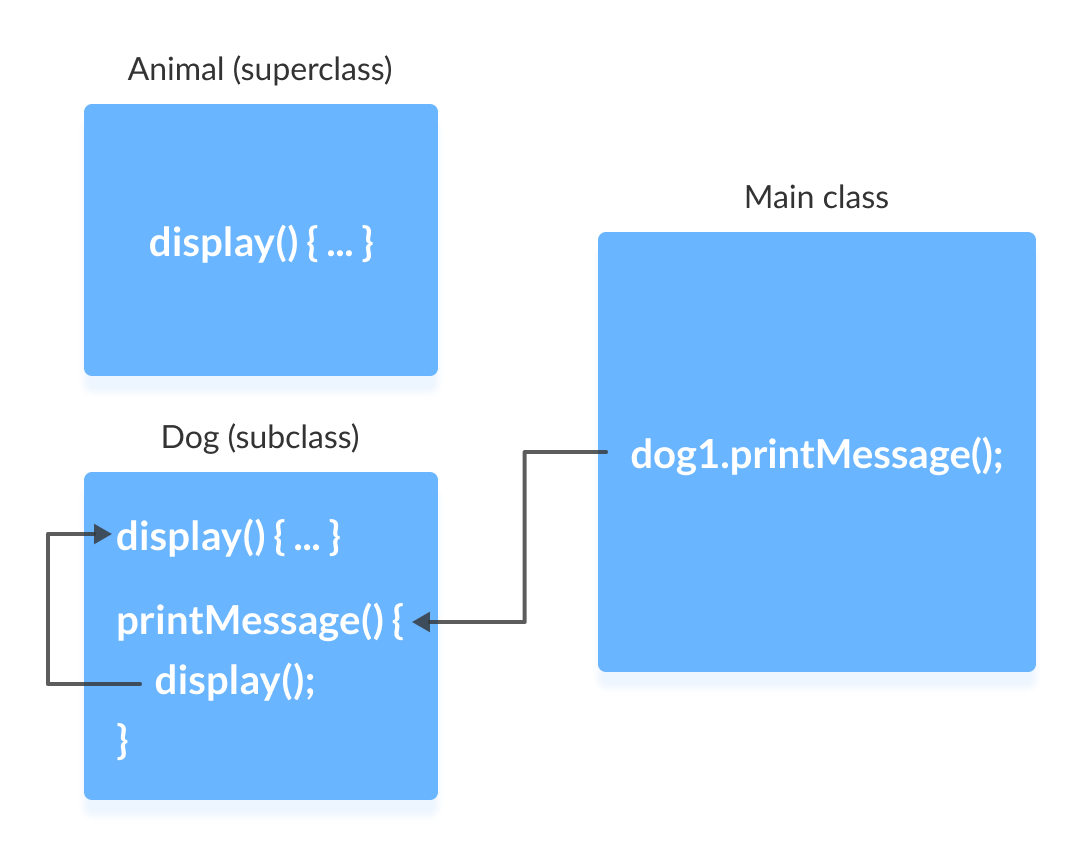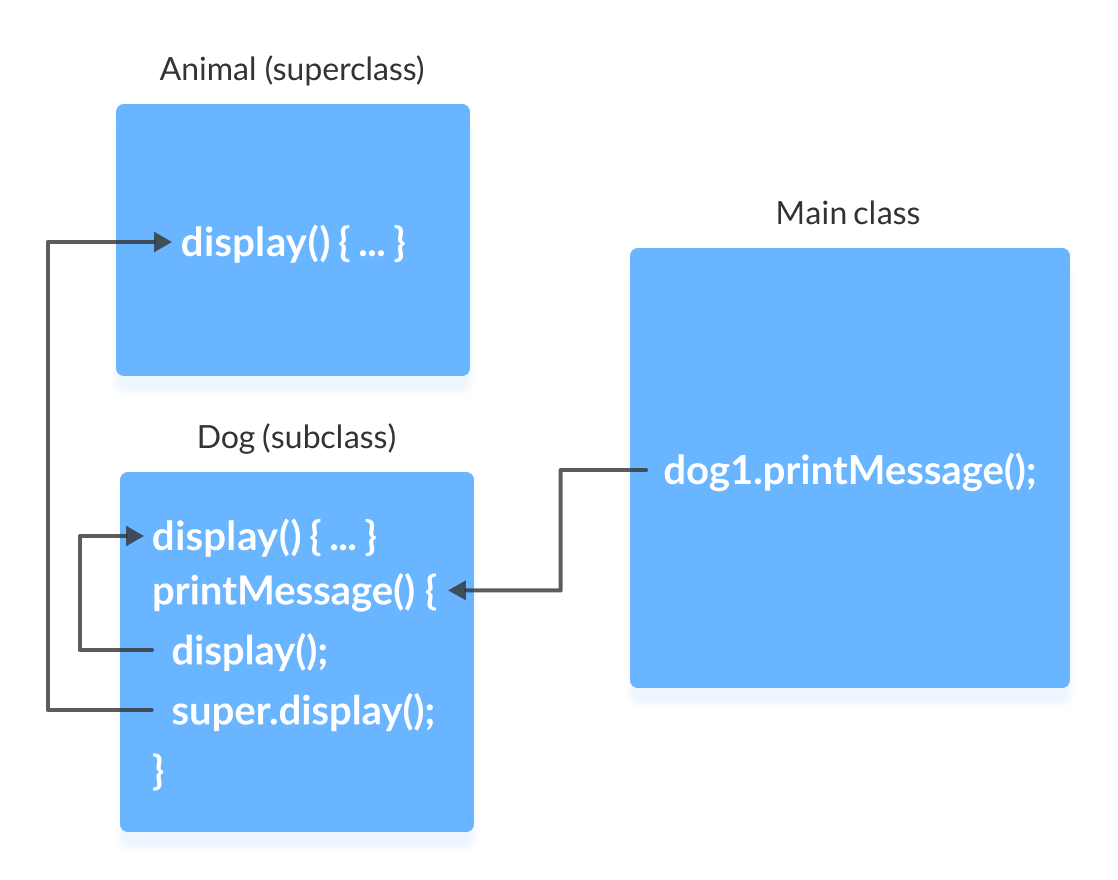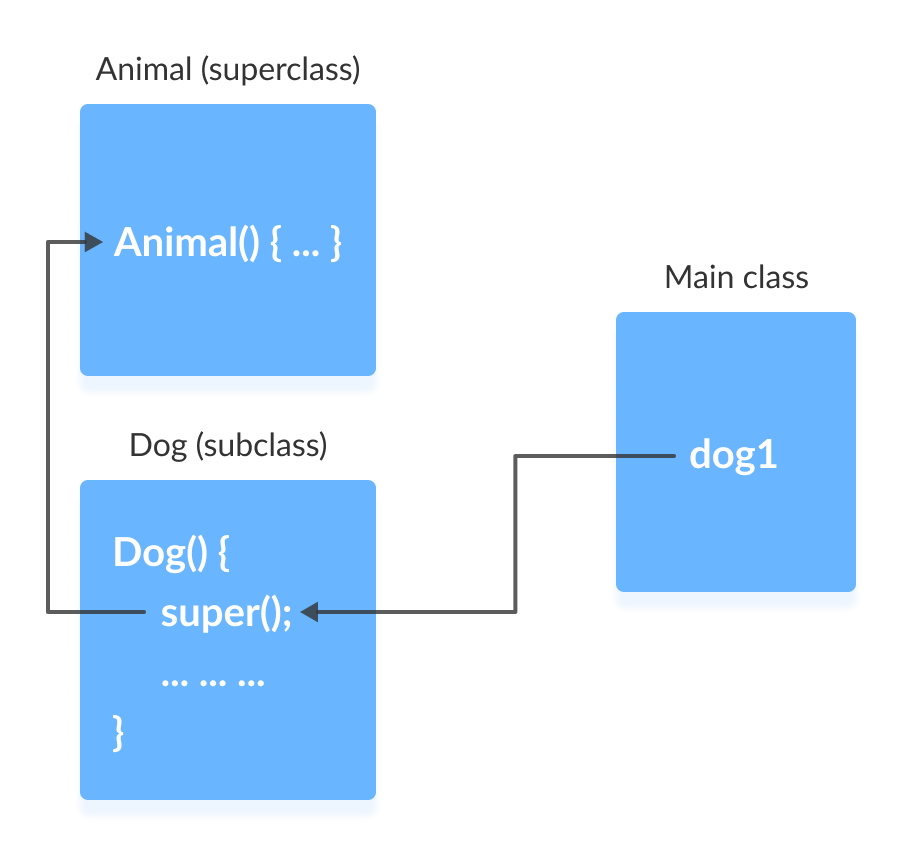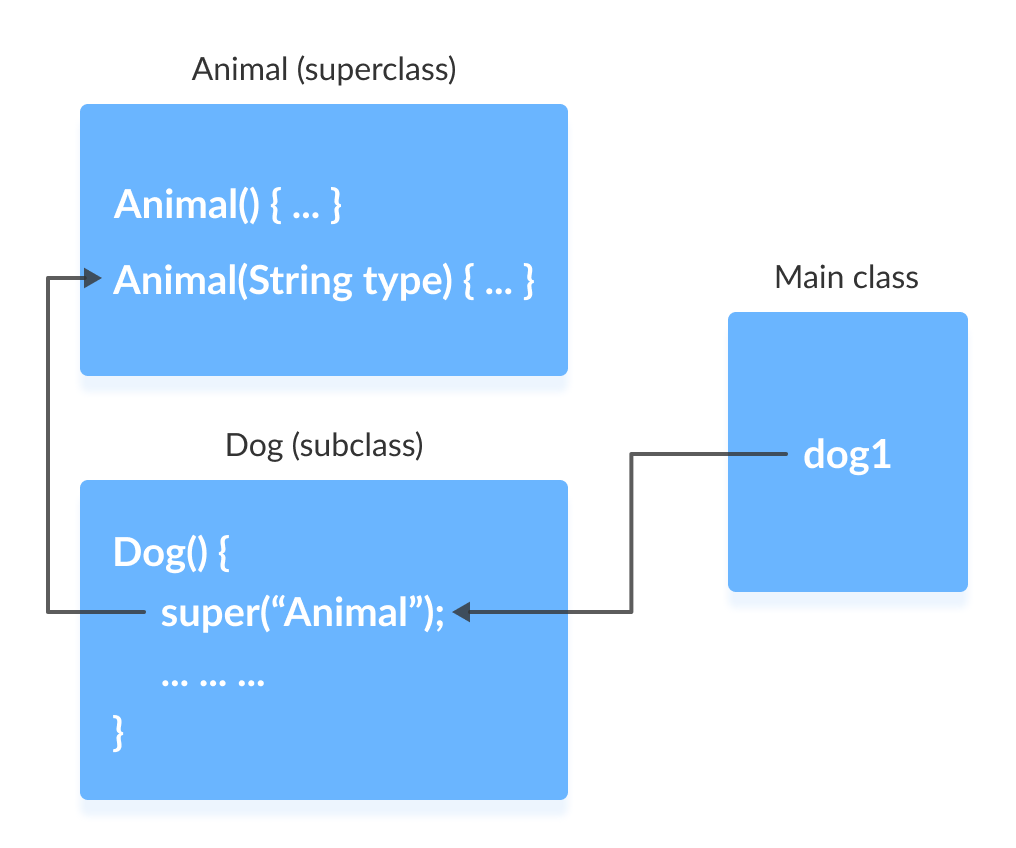Java超级
Java 超级
在本教程中,我们将通过示例了解 Java 中的 super 关键字。
super Java中的关键字在子类中用于访问超类成员(属性、构造函数和方法)。
在我们了解super之前 关键字,请务必了解 Java 继承。
超级关键字的使用
- 调用在子类中被覆盖的超类的方法。
- 如果超类和子类具有相同名称的属性,则访问超类的属性(字段)。
- 从子类构造函数显式调用超类无参数(默认)或参数化构造函数。
让我们了解这些用途。
1.访问超类的重写方法
如果在超类和子类中都定义了同名的方法,则子类中的方法会覆盖超类中的方法。这称为方法覆盖。
示例 1:方法覆盖
class Animal {
// overridden method
public void display(){
System.out.println("I am an animal");
}
}
class Dog extends Animal {
// overriding method
@Override
public void display(){
System.out.println("I am a dog");
}
public void printMessage(){
display();
}
}
class Main {
public static void main(String[] args) {
Dog dog1 = new Dog();
dog1.printMessage();
}
}
输出
I am a dog
在这个例子中,通过制作一个对象 dog1 狗 类,我们可以调用它的方法 printMessage() 然后执行 display() 声明。
从 display() 在两个类中都有定义,子类 Dog 的方法 覆盖超类 Animal 的方法 .因此,display() 子类的被调用。

如果必须调用超类的重写方法怎么办?
我们使用 super.display() 如果被覆盖的方法 display() 超类 Animal 需要调用。
示例2:super调用超类方法
class Animal {
// overridden method
public void display(){
System.out.println("I am an animal");
}
}
class Dog extends Animal {
// overriding method
@Override
public void display(){
System.out.println("I am a dog");
}
public void printMessage(){
// this calls overriding method
display();
// this calls overridden method
super.display();
}
}
class Main {
public static void main(String[] args) {
Dog dog1 = new Dog();
dog1.printMessage();
}
}
输出
I am a dog I am an animal
到这里,上面的程序是如何工作的。

2.超类的访问属性
超类和子类可以具有同名的属性。我们使用 super 关键字来访问超类的属性。
示例3:访问超类属性
class Animal {
protected String type="animal";
}
class Dog extends Animal {
public String type="mammal";
public void printType() {
System.out.println("I am a " + type);
System.out.println("I am an " + super.type);
}
}
class Main {
public static void main(String[] args) {
Dog dog1 = new Dog();
dog1.printType();
}
}
输出 :
I am a mammal I am an animal
在这个例子中,我们定义了相同的实例字段 type 在两个超类 Animal 和子类 Dog .
然后我们创建了一个对象 dog1 狗 班级。然后,printType() 使用该对象调用方法。
printType() 内部 功能,
- 类型 指子类 Dog 的属性 .
- super.type 引用超类Animal的属性。
因此,System.out.println("I am a " + type); 打印
我是哺乳动物
.而且,System.out.println("I am an " + super.type); 打印
我是动物
.
3。使用 super() 访问超类构造函数
我们知道,当一个类的对象被创建时,它的默认构造函数会被自动调用。
要从子类构造函数显式调用超类构造函数,我们使用 super() .它是 super 的一种特殊形式 关键字。
super() 只能在子类构造函数内部使用,并且必须是第一个语句。
示例 4:super() 的使用
class Animal {
// default or no-arg constructor of class Animal
Animal() {
System.out.println("I am an animal");
}
}
class Dog extends Animal {
// default or no-arg constructor of class Dog
Dog() {
// calling default constructor of the superclass
super();
System.out.println("I am a dog");
}
}
class Main {
public static void main(String[] args) {
Dog dog1 = new Dog();
}
}
输出
I am an animal I am a dog
在这里,当一个对象 dog1 狗 创建类时,它会自动调用该类的默认或无参数构造函数。
在子类构造函数中,super() 语句调用超类的构造函数并执行其中的语句。因此,我们得到输出
I am an animal
.

然后程序流程返回到子类构造函数并执行剩余的语句。因此, 我是一只狗 将被打印出来。
但是,使用 super() 不是强制性的。即使 super() 子类构造函数中不使用,编译器会隐式调用超类的默认构造函数。
那么,如果编译器自动调用 super(),为什么还要使用冗余代码呢?
参数化构造函数(带参数的构造函数) 必须从子类构造函数中调用超类。
参数化的 super() 必须始终是子类构造函数体中的第一条语句,否则会出现编译错误。
示例5:使用super()调用参数化构造函数
class Animal {
// default or no-arg constructor
Animal() {
System.out.println("I am an animal");
}
// parameterized constructor
Animal(String type) {
System.out.println("Type: "+type);
}
}
class Dog extends Animal {
// default constructor
Dog() {
// calling parameterized constructor of the superclass
super("Animal");
System.out.println("I am a dog");
}
}
class Main {
public static void main(String[] args) {
Dog dog1 = new Dog();
}
}
输出
Type: Animal I am a dog
编译器可以自动调用无参数构造函数。但是,它不能调用参数化的构造函数。
如果必须调用参数化构造函数,我们需要在子类构造函数中显式定义它。

请注意,在上面的示例中,我们显式调用了参数化构造函数 super("Animal") .这种情况下编译器不会调用超类的默认构造函数。
java


